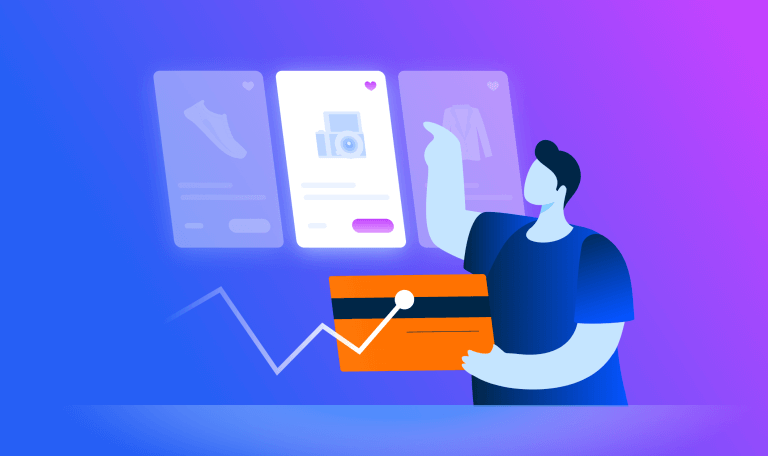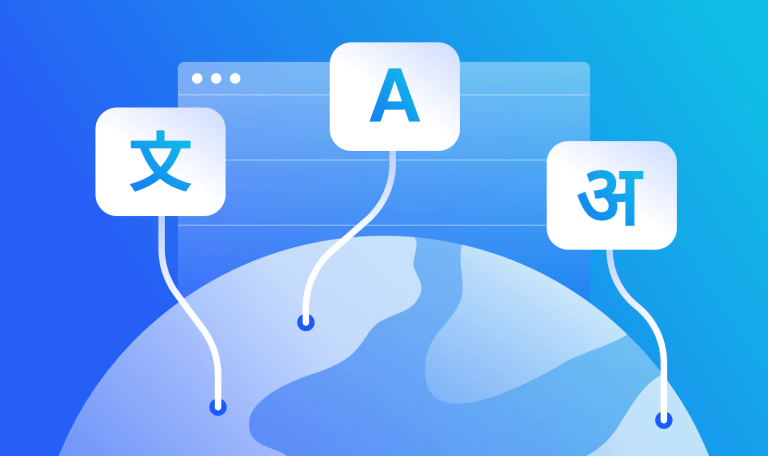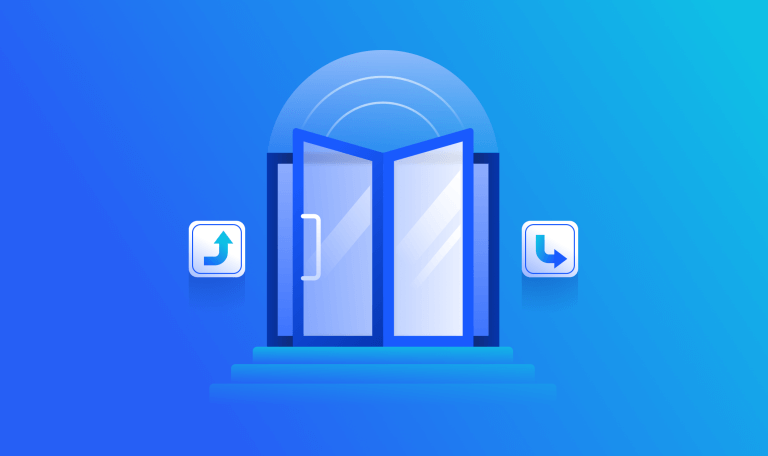How to Ace the Top Marketing Channels

Would you post the same content on your Instagram and your LinkedIn? Probably not. You have different followers on your social media accounts who expect different content. Your weekend experience is probably a better fit for Instagram, while your professional insights should go on LinkedIn. In your personal life, you know what to post on which channel.
What about when it comes to business marketing? When you’re using multiple marketing channels, you need to adapt your content for each one. If you’re using the same content for email marketing and PPC campaigns, you’re probably losing out on some of the benefits your marketing can bring.
Read on to learn about the top marketing channels and what is important for each one.
What are marketing channels?
Marketing channels are the different avenues you use to speak with your audience. The goal of each channel is to communicate and build a relationship with a specific audience that relates to that channel.
You might have a marketing channel that focuses on brand awareness among new leads, a different channel focused on customer retention, another focused on converting, and more. Each channel requires its own messaging and a method for distributing that message to the audience.
There are offline channels, such as direct mailings and newspaper advertising, and online marketing channels, such as your website and social media presence. Marketing channels can also be direct – you speaking directly to your audiences – or indirect – where others, such as influencers or affiliates, speak to your audiences. In this article, we will focus on direct digital marketing channels and what is important for each one.
Why are marketing channels important?
As a marketer, is it enough to write one message and hope that it does well? Definitely not. Marketing has many purposes and speaks to multiple different target audiences.
For example, you wouldn’t want to send a new customer promotion to your long-time loyal users. Sending someone the wrong message at the wrong time could turn someone away from your business and ruin a good customer relationship.
Optimizing your communication for different digital marketing channels ensures that you are sending the right messages to the right audiences, which ultimately leads to more sales, higher conversions, and a better ROI.
Types of marketing channels
You need to decide which channels you have the resources to focus on and which will best speak to your audiences. Your website is the most direct marketing channel you have to connect with your audience. Your website sets the tone for all of your marketing activities and content across different channels because, if your marketing activities are effective, your audience will end up here.
Direct website traffic
Your direct website traffic marketing channel speaks to an audience that specifically navigated to your website. These visitors are already aware of your brand and may be new or previous customers. Most likely, these visitors are already deep into their decision-making process and have high intent to make a purchase.
This is one of the most important channels for converting high-intent visitors into customers or repeat customers. This means that the content on this channel must be optimized for conversions. You’ll want to clearly state the benefits of your products and services and make it easy for website visitors to take the next steps to convert. This could include adding buttons, widgets, pop-ups, or any other tools that guide your website visitors toward your desired outcome.
Email marketing
This channel includes all the emails you send to subscribers on your mailing list. Generally, anyone who is subscribed to your mailing list is already aware of your brand, either because they previously purchased from you or because they subscribed to your newsletter, or because they are interested in your company.
This traffic channel is one of the best ways for you to speak with your customers because you have a direct line to their inboxes. With social media, for example, when you write a post, only about 10% of your followers see it. But with email, you aren’t at the mercy of social media algorithms to get exposure. As long as your emails don’t get labeled as spam, your subscribers are sure to see your emails in their inboxes…
As long as they open your email. For email marketing, target yourself on industry benchmarks for open rates, click-through rates, as well as subscribes and unsubscribes.
Email marketing is also a great channel for remarketing and re-engaging with your customers. It’s an important marketing channel for retention and ensuring your brand stays at the forefront of your customers’ minds. You can do this by sending regular emails with updates and promotions related to your customers’ previous purchases.
Organic traffic
This is probably how you found us and started reading this blog, to begin with.
Organic traffic is an important channel for potential customers to discover your business. Your website content must be optimized for visitors who will organically land on your pages. You want these visitors to read your content and be inspired to continue browsing your website and learning more about your brand.
This requires two important activities: optimizing your content so that your website is discovered organically, and ensuring that your content is interesting, relevant, and valuable to the visitors who land on your pages.
To do these two things effectively, you need to know what people are looking for when using search engines like Google, and how you can answer their questions and match their search intent. The first step is to research keywords to see what people are typing into their search bars and to see what type of content you can create related to those keywords. You then will create your content strategy to decide what to write.
Our advice? Create evergreen content, which is valuable content that will stay relevant for a long time.
The goal of your organic content marketing channel is all about generating more brand awareness, familiarizing your potential customers with your company, increasing your domain authority, and establishing your brand as an expert and trustworthy source of information.
SEM and PPC
Like organic marketing, SEM and PPC are all about helping potential customers discover your brand. The difference between SEM and PPC is that you are paying for people to see advertisements and click on your ads.
This is a very effective marketing channel for acquiring new customers, especially those with high transactional intent.
An effective paid search campaign takes a lot of work to ensure it has a positive ROI. It starts with doing thorough PPC keyword research r to choose which keywords you want to bid on. You should also look at which keywords your competitors are targeting and develop a keyword bidding strategy. You might find that there are many highly competitive keywords in your industry, so consider looking for long-tail keywords for more cost-effective, yet highly valuable clicks.
This marketing channel requires constant campaign optimization to improve your costs per click and your conversion rate on your ads. You need to continuously adjust your keywords, update bids, and improve the content on your landing pages. PPC takes work and budget to pursue, but it can come with quick returns and huge rewards.
Display ads
Display ads include banners, images, videos, or other advertisements that appear on websites or social media platforms. Usually, you pay per click with display ads so you need to develop a bidding strategy that will lead to a good ROI.
This traffic marketing channel is especially useful for retargeting potential customers who may have engaged with your brand online but did not end up making a purchase.
For example, you might want to use display ads to reach people who browsed your website but bounced before purchasing, people who abandoned carts on your site, clicked on your PPC campaigns, or engaged with your social media. Showing any of these types of people a display ad can significantly improve the chances that they’ll purchase from you.
To use this marketing channel, you need to create ads and find the best publishers to distribute them. You want to tailor your ads to the type of audience who will see them, and ensure that they are aligned with other ads in your industry. You can use Similarweb’s Discover Ads Creative tool to see what ads your competitors are running and then use the Find Ad Networks tool to find effective publishers in your industry.
Social media
Today, social media is an essential element in any digital marketing strategy. One of the unique aspects of this marketing channel is that it enables two-way communication. It isn’t just about you creating messages for your audience, it also gives your audience a way to connect with you by liking, commenting, or sharing your content, and opens the door for you to communicate personally with your followers.
There are a lot of things to consider when building your social media strategy. One of the first questions you need to answer so you can build out your strategy is which platforms are right for you.
It might be tempting to open accounts on all of them, but this could lead to wasted efforts on your part. You need to think about which platforms your audience is using. Are you marketing to C-suite employees? You can probably forgo TikTok and focus on LinkedIn and Facebook. Are your customers Gen’ Zers or even Gen’ Alphas? Instagram and TikTok could be better bets.
It’s important to remember that this marketing channel is not only for selling. It’s about providing quality content to your audience and connecting with them socially. If done right, these social connections will lead to sales.
Referrals
With referrals, other people are marketing your business for you. It’s a great marketing channel to boost sales with minimum effort. Referral marketing can be done either by satisfied customers or affiliates.
For example, you could offer benefits or deals for customers who recommend your product to their friends, such as a discount or points toward their next purchase. You can also ask these customers to write reviews of your products and services, which have a huge influence on future customers’ purchasing decisions.
For larger-scale referrals, you can start an affiliate marketing program. With affiliate marketing, you pay affiliates a percentage of sales in exchange for them marketing your business. It’s a great way to keep marketing costs down since you pay for performance.
The referral marketing channel is a great way to acquire new customers that you may not have been able to reach by other means. Additionally, people tend to trust referrals more than they trust a company marketing themselves, so people who find out about your business through referrals may be more likely to make a purchase.
Marketing channels examples
Let’s recap the different examples of digital marketing channels.
All of these are great examples of channels for you to pursue in your business. Each channel targets customers in different stages of their journeys and requires its own messaging to connect with these customers.
Which marketing channels will you use?
The key to marketing today is not to choose one channel to focus on. Rather, successful marketers will pick several channels and create a unified omnichannel experience. You need to decide which channels work for you and what percentage of your efforts you’ll invest in each one. The reality is, that your marketing budget is limited, so you need to prioritize. Think about which channels your customers are using and what resources you have for each one. Create a good marketing channel mix, and you’re sure to see its effects on your bottom line.
FAQ
What is a marketing channel?
A marketing channel is a specific method that you use to reach your target audience. You might reach them through your website content, emailing, paid search campaigns, social media, referrals, or other means. Each marketing channel has its own goals and methods for distributing content to customers in different stages of their journeys.
What are the different marketing channels?
There are many different marketing channels you can use in your business. There are offline channels, including print advertisements, brochures, and billboards, as well as online marketing channels including direct website traffic, email marketing, organic content, SEM and PPC, display ads, social media, and referrals.
Which marketing channels should I use?
It’s important to use several marketing channels to reach your target audience in different stages of their customer journeys. Today, most brands focus on creating an omnichannel experience to connect with customers across different channels. You should choose which channels will be best to reach your customers and focus your efforts on these.
Your full marketing toolkit for a winning strategy
The ultimate solution to help you build the best digital strategy










